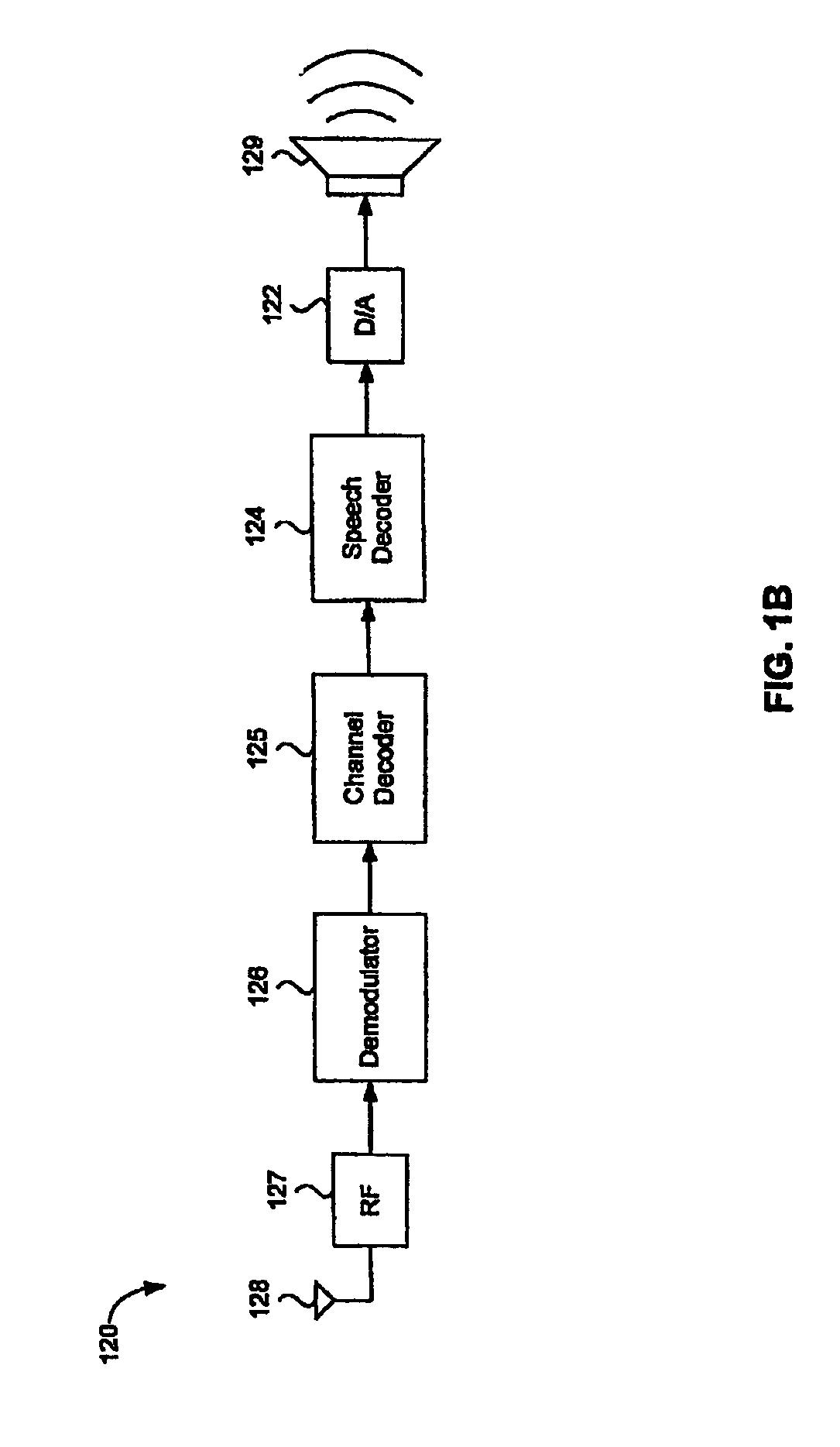Wireless telephone with adaptive microphone array
a wireless telephone and microphone array technology, applied in the field of wireless telephones, can solve the problems of inability to distinguish the voice component from the background noise component, the inability of the far-end user to decipher the desired voice component against the din of the embedded background noise component, and the inability to decipher the desired voice component. the effect of steering
- Summary
- Abstract
- Description
- Claims
- Application Information
AI Technical Summary
Benefits of technology
Problems solved by technology
Method used
Image
Examples
Embodiment Construction
[0046]The present invention provides a wireless telephone implemented with at least one microphone array and at least one DSP. As will be described in more detail herein, in a first embodiment, audio signals output by microphones in a first microphone array can be combined by a first DSP in such a manner to reduce the amount of background noise picked up by the first microphone array. In a second embodiment, audio signals output by microphones in a second microphone array can be combined by a second DSP in such a manner to reduce the amount of a user's voice picked up by the second microphone array. In a third embodiment, a direction of arrival (DOA) of a highly directional sound source can be determined. In this embodiment, audio signals output by microphones in a first microphone array can be combined in such a manner to reduce the pick-up of the highly directional sound by the first microphone array. Additionally or alternatively, audio signals output by microphones in a second m...
PUM
 Login to View More
Login to View More Abstract
Description
Claims
Application Information
 Login to View More
Login to View More - R&D
- Intellectual Property
- Life Sciences
- Materials
- Tech Scout
- Unparalleled Data Quality
- Higher Quality Content
- 60% Fewer Hallucinations
Browse by: Latest US Patents, China's latest patents, Technical Efficacy Thesaurus, Application Domain, Technology Topic, Popular Technical Reports.
© 2025 PatSnap. All rights reserved.Legal|Privacy policy|Modern Slavery Act Transparency Statement|Sitemap|About US| Contact US: help@patsnap.com



